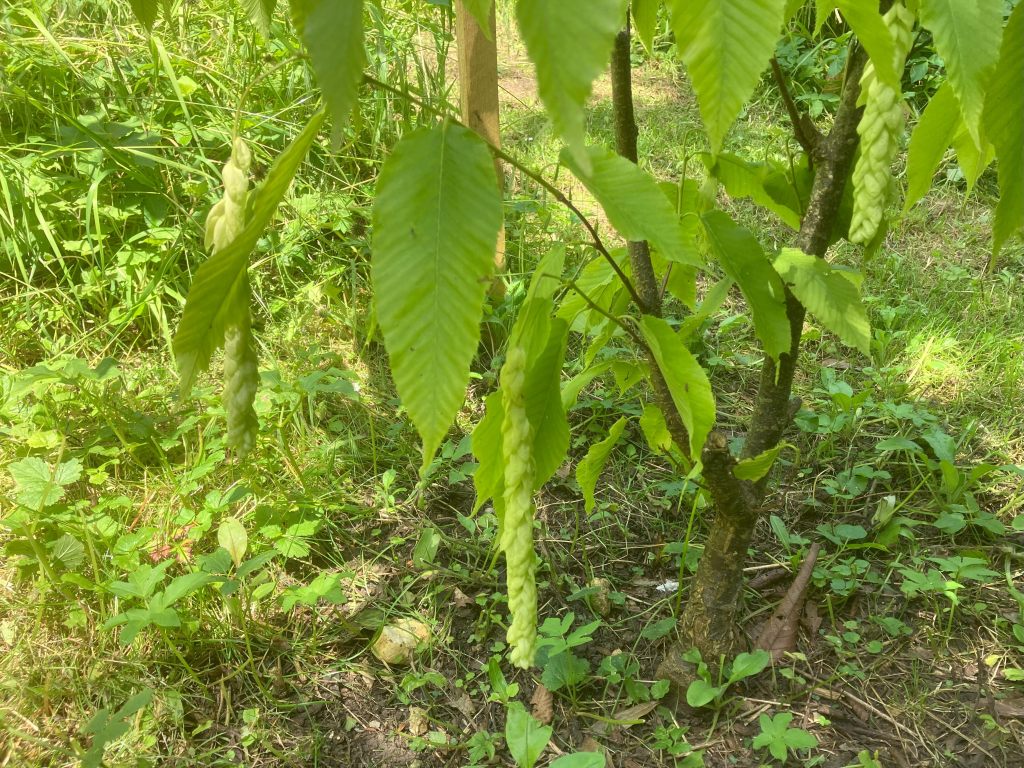#410 (M10) FANG'S HORNBEAM
Carpinus fangiana

Planted: 2007
| This tree is planted on the east side of the Philadelphus Walk. |
| Distribution: | Native to southwestern China, specifically southeastern Sichuan near Chongqing. |
| Planting Date: | March 2007, purchased from Pan-Global Plants, Frampton-on Severn, Gloucestershire. |
| Growth Habit: | A large, broadly conical deciduous tree with attractive foliage and hop-like fruit clusters in late summer and autumn. Ultimate size in more than 50 years: 8 to 12 m height , 4 to 8 m spread. |
| Bark: | Smooth and grey, ultimately fissured and scaly. |
| Leaf: | Narrow oval, double-toothed leaves have prominent veins and are up to 27cm long. They emerge purple-bronze in spring, becoming olive-green. |
| Flowers: | Insignificant |
| Seeds: | Papery catkins up to 30cm long appear in spring, gradually fading to tawny brown |
| Uses: | Ornamental – native species grown for commercial applications. Hornbeam is a strong and durable wood. Historically, it was a prized source of hardwood, particularly for making tools, coach wheels, and cogs in traditional windmills. Today, its wood is primarily used for furniture, flooring, and wood turning. Valuable as a wildlife habitat. Responds well to coppice and clipped hedge management. |
| Plant Hunter: | It is named after Fang Wen-Pei (1899-1983), a Chinese botanist and expert on the trees of Sichuan, who first collected this species near Nanchuan Xian, in southeastern Sichuan, near Chongqing in theearly 1920s. |
| Introduction Date: | Seeds were introduced to Kew in October 1991 from a collection made by John Simmons, Charles Erskine, Charles Howick and William McNamara. |
| Anecdotes: | Also called Monkey Tail Hornbeam. |